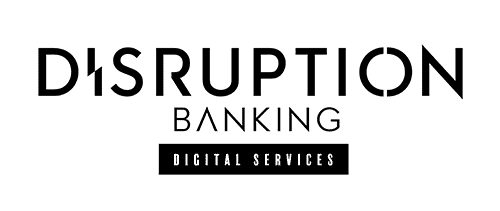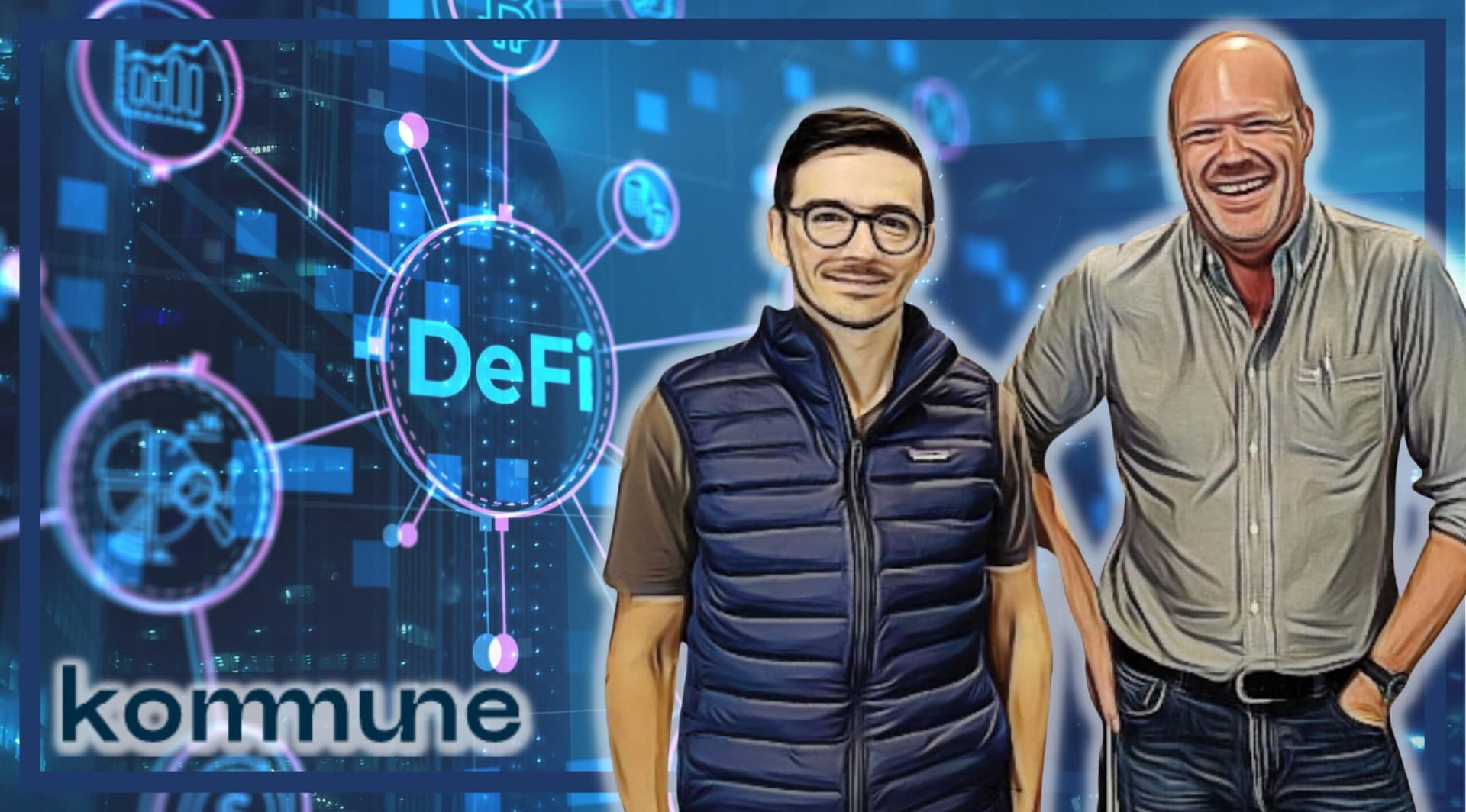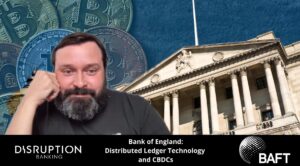It was unusually hard to identify a major player within decentralized finance (DeFi) when first scoping out Texas. Be that Dallas, Houston, or Austin, DeFi is not represented as well as it is in some other states in the U.S., let alone countries across the world. Their maybe many things that are bringing community to Texas. Innovation. Big Tech. Elon Musk. Dell. But DeFi and Web3 aren’t as high on that list as they could be.
This is odd as the Bank of Austin and a multitude of community banks in the U.S. offer community banking services such as small loans to businesses. Businesses which are booming due to the amount of migration happening within the U.S. today.
The other consideration when it comes to Austin is the amount of infrastructure development taking place in the city. Something that is often funded through municipal bonds, a popular mechanism for raising funds for public projects in the U.S.
So how can DeFi not be popular, right? From what I could tell in Austin, though, it appeared these infrastructure projects were funded through the abundance of toll roads that one can hardly escape when driving around the city.
Much as the amount of crypto advertising appears to be at a minimum in Texas, so is the widespread understanding of how digital assets can benefit the local economy. Most people know about what is happening with bitcoin in El Salvador, true. But, with cartels operating only a few hours down the I-35, this isn’t a massive selling point towards the naturally more conservative local population of Texas.
However, there are developments in DeFi occurring in Austin. And I met up with Stan Sukhinin, Co-Founder at Kommune DAO, to find out more.
Investing in DeFi
Unsurprisingly, when I met with Stan…. in person, he wasn’t from Texas originally. Like Vitalik Buterin of Ethereum, or Sergey Lavrov of Chainlink, or Anton Bokov of 1inch Network, Stan can trace his roots back to Russia. He has been active in the digital assets space since 2017, and he sees investment opportunities within DeFi that are both sustainable and transparent.
Stan started by explaining how the team at Kommune DAO are creating an investment DAO. A regulated decentralized autonomous organization (DAO) which works to raise and invest capital into different assets on behalf of community members.
Stan explained how startups in the crypto space are very different to tech startups in the market. With a DeFi startup you can have no revenue, but then when it launches, it can make even $1 billion within a year (especially when it comes to releasing their own tokens). You need to act fast to ensure you are involved, Stan shared.
One of the areas of DeFI that Stan highlighted needs more support right now is the ‘content’ side of DAOs. Whether that be community managers, designers, or content creators.
Often, these same individuals can drive ‘hype’ around crypto projects too. Something we discussed in more detail
Driving users to DeFi
To understand the ‘hype’ created by bitcoin and other cryptocurrencies Stan pointed out how there was a similar hype in the crypto winter of 2017. But back then there was no DeFi or NFTs. These projects started to scale when the next crypto winter of 2019 hit the crypto market. Today the hype around NFTs is similar to what we witnessed with bitcoin and ethereum during the crypto winters.
In the meantime, the DeFi ecosystem is having other challenges. One of those is the topic of ‘indexing’. There are several portals like DeFi Llama or DeFi Pulse that show the overall assets under management within the DeFi ecosystem. Unfortunately, no two portals list the same figures. Something that Stan explained.
“How do you generate the price when everywhere the price is different?” Stan asked. He continued by explaining how with staking many of the ‘rewards’ are paid out in different cryptocurrencies than ethereum. How it can often be hard to work out the exact value of some of these tokens. On top of this various decentralized exchanges also list different prices for different tokens as the information about pricing can change by the second. All of this together makes it incredibly hard to value the DeFi ecosystem’s assets under management.
DeFi Projects worth knowing about
Stan pointed out how Kommune DAO was different to existing investment DAOs like Flamingo DAO which was in the news earlier in 2022:
.@FLAMINGODAO's NFT portfolio has joined the three comma club. It includes 215 CryptoPunks, 22 @BoredApeYC, the Alien Punk @citizen2890 and hundreds of @artblocks_io pieces. The current buy-in? 3,000 ETH.@0x_bae reports.https://t.co/qGo1SqC2aK
— CoinDesk (@CoinDesk) February 10, 2022
Flamingo DAO seemingly invest solely ‘on-chain’, but there are many opinions about the long-term success of their strategy. NFTs aren’t the only part of Web3 that needs investment.
“It is difficult to exclusively invest ‘on-chain’,” Stan explained. Using the example of an exciting new blockchain which is completely new and hasn’t built any blockchain bridges yet, he showed how sometimes funds must be taken ‘off-chain’ to invest in projects that are key to DeFi. Projects that will ultimately return ‘on-chain’ when they succeed in gaining traction and users.
Another breakthrough initiative we discussed was the advent of Soulbound tokens:
Keep an eye on Soulbound tokens(SBTs) developments.
— The DeFi Investor🦇🔊 (@TheDeFinvestor) October 26, 2022
SBTs are NFTs that represent a person’s identity on-chain.
Potential use cases:
•credit scoring
•certifying achievements
•reputation-based voting for DAOs
SBTs can bring mass adoption to DeFi faster than we can imagine.
These tokens were described by Vitalik Buterin as non-transferable NFTs that can help represent a person’s identity and achievement in Web3. Initially discussed by Buterin in January of this year, the founder of Ethereum explored if NFTs could be soulbound. He elaborated by asking “What if governance rights could be soulbound?” something that could eventually replace how credit rating agencies operate today.
Stan hinted how these soulbound tokens could eventually have information like how many Web3 events you have attended, been a speaker at. Or how many projects in DeFi you are involved with. Helping eventual creators and founders within the DeFi ecosystem better allocate support for their projects by searching and approaching the owners of specific soulbound tokens. Not to mention the benefits this type of token would give when it comes to profiling individuals for credit.
How Kommune DAO works
Stan reiterated how Kommune DAO will first and foremost be investing in projects necessary for the development of the crypto ecosystem. Be they new blockchains, indexing companies, wallets, computation companies, private key management startups, or storage companies.
Drawing inspiration from the ‘Mutual Investment Club of Detroit’ which was founded in 1941, Stan explained how Kommune DAO would work under a similar principle. It is important to highlight here how investment clubs are treated differently by the SEC. Most digital tokens are not considered to be securities. Also, if each member of the investment club is engaged and not just a passive investor, they are also exempt from the SEC.
KYC and AML rules will apply to new members who want to join Kommune DAO. Anonymity is still an aspirational concept when dealing with users in DeFi today.
“We invest in early-stage venture projects,” Stan explained. With investing ‘on-chain’, Stan believes there is an added layer of transparency that you wouldn’t get from a traditional investment club. All members of Kommune DAO will be able to see where their funds are being sent and can interact more openly about their common investments.
“The main challenge faced by investors currently is to find a project early,” Stan elaborated further. “Then you have to sell yourself to the project.” Often these projects will have a compelling white paper which means that everyone wants to participate. The investment opportunities currently are all very competitive and not all investors can get involved, Stan shared.
We're looking for projects that will drive the adoption of decentralized technology. We believe the following categories are critical to driving adoption of the space: https://t.co/0l3xWFyGNp
— Digital Startup (@digitalstartup5) October 31, 2022
“Our thesis is that participants in our projects will drive the adoption of the crypto space,” Stan clarified. “Where are the bottlenecks that are impeding the next 100 million people from getting involved with crypto? These bottlenecks are things like wallets, user interface (UI), user experience (UE), private key management, identity, indexing and storage.”
There are no good indexing or storage options available today. Apart from these tools, there is also a need for decentralized solutions. Currently blockchain nodes are centralized, another area that needs urgent investment according to Stan.
Pointing to the rise of Multi-Signature (MultiSig) wallets, Stan explained how five years ago only bitcoin had a MultiSig, it was only later that Ethereum allowed for this technology. Today we take it for granted that you can use multisig wallets. However, Stan pointed out, this technology is only four years old. With time the technology will improve, allowing one billion people to be onboarded. But it all takes time.
Bringing Real World Assets into DeFi
Stan believes it is simply too early to facilitate ‘off-chain’ assets like bonds or community projects into DeFi on a large scale. He believes that the infrastructure is simply not in place yet.
“We need to build the essential tools necessary to provide a smooth and seamless experience in order to not disappoint the next wave of 1 billion people that want to onboard into the crypto space.” Stan highlighted.
Companies like Centrifuge, who are working with MakerDAO, are already trying to bring off-chain projects into the DeFi space. So far, we are talking a few hundred million dollars’ worth of projects, which is a start, but nowhere near the scale that we will see one day.
“We need time,” elaborated Stan drawing comparisons to the dotcom bubble. Back in 2000 the internet was all the craze. It was the future. However, the initial promise of the internet took much longer to realise than people at first thought. It is only really today that the internet has penetrated a large part of the global population. DeFi has this promise too, but it’s only been four years. Stan reiterated the need for a patient approach to the building of the essential infrastructure elements of the crypto ecosystem. Something that Kommune DAO will be helping to fund.
Author: Andy Samu
#Computation #PrivateKeyManagement #Storage #Indexing #DeFi #DAO #Tokens #DigitalAssets #OnChain #OffChain #InvestmentClub #Soulbound #NFTs















